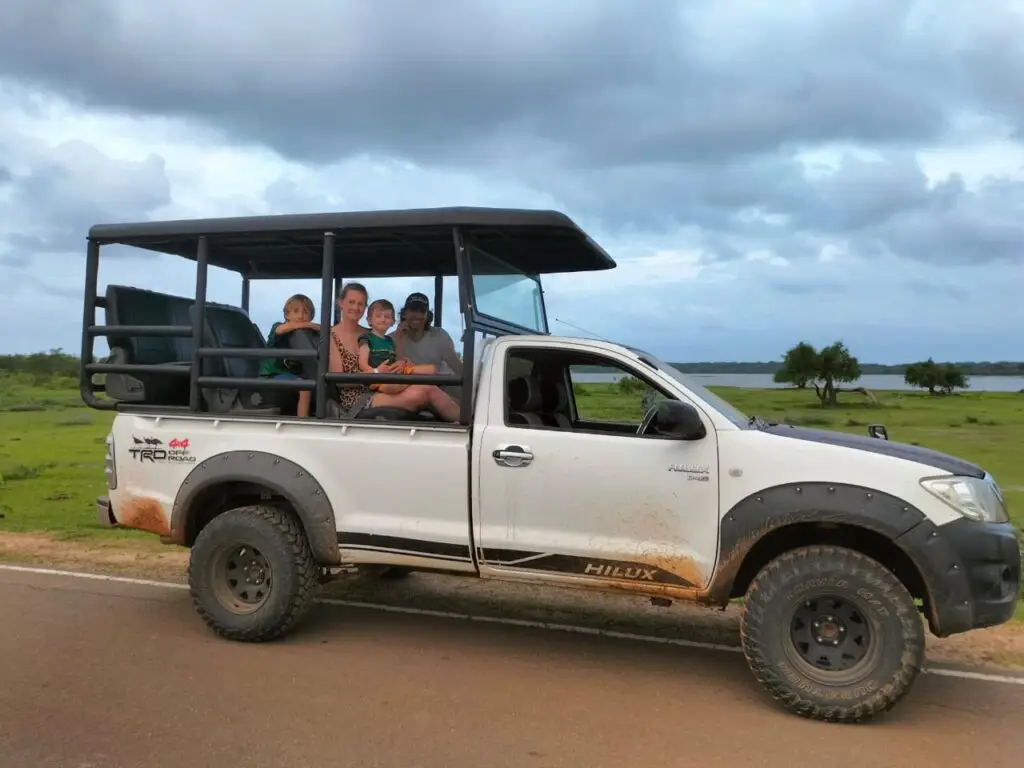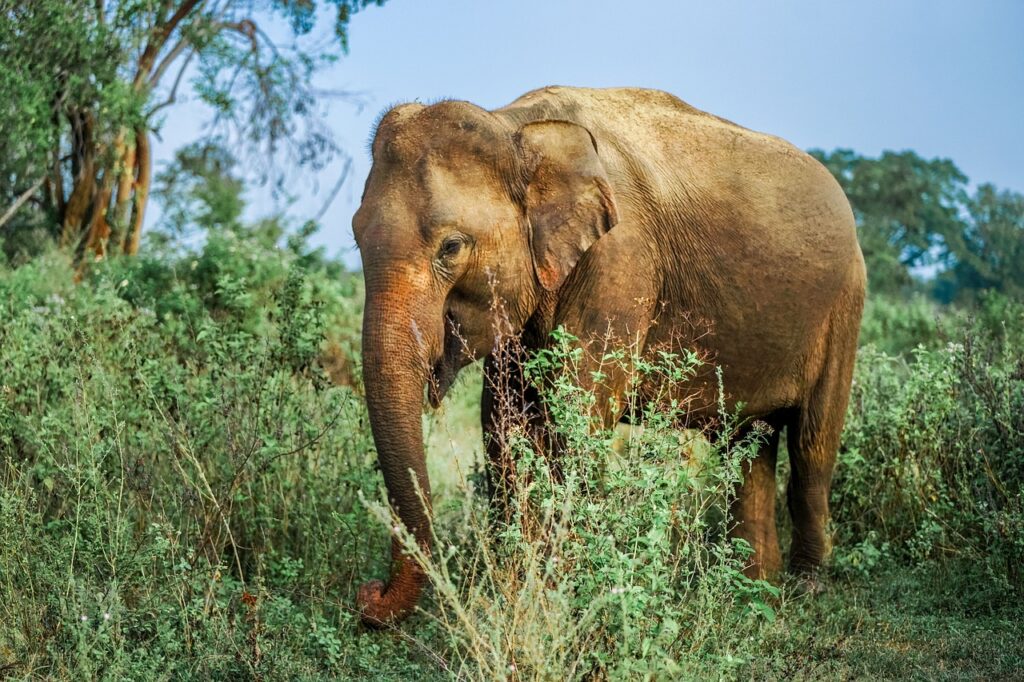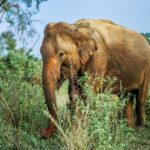Introduction to Best Time for a Sri Lanka Safari
Best Time for a Sri Lanka Safari, Sri Lanka, an island nation nestled in the Indian Ocean, is renowned for its stunning biodiversity and vibrant ecosystems. The country is home to an array of unique wildlife species as well as diverse habitats ranging from lush rainforests to arid plains. This remarkable variety makes it a prime destination for wildlife enthusiasts and adventure seekers alike, contributing to the increasing popularity of Best Time for Sri Lanka Safari. The country’s national parks and nature reserves offer visitors exceptional opportunities to observe wildlife in their natural environments.
Amongst the most notable parks are Yala National Park, home to the elusive leopard, and Udawalawe National Park, known for its large elephant population. These parks not only serve as sanctuaries for wildlife but also provide ecosystems that support a myriad of flora and fauna. Birdwatching is another major attraction, with Best Time for Sri Lanka Safari hosting over 400 bird species, including many endemic varieties. The rich tapestry of wildlife experiences captivates travelers, enticing them to embark on unforgettable safari journeys.
The allure of a Best Time for Sri Lanka Safari lies in its immersive nature experiences, which offer breathtaking opportunities for photography and connection with nature. Visitors can explore various Best Time for Sri Lanka Safari options such as jeep safaris, trekking, and even guided eco-tours that focus on sustainable wildlife observation. Each safari venture presents distinctive encounters, whether it’s witnessing a herd of elephants or spotting a rare bird species. With multiple national parks situated across the island, travelers have the flexibility to choose their desired destination based on their interests and the best time for Sri Lanka safari that aligns with local wildlife activity.
Ultimately, understanding the nuances of the country’s ecosystems and the wildlife that inhabits them lays the groundwork for selecting the ideal time to embark on a Best Time for Sri Lanka Safari adventure. This guide aims to provide insights that enhance your experience and help you plan a memorable expedition in Sri Lanka’s breathtaking wilderness.
Understanding Sri Lanka’s Climate (Best Time for Sri Lanka Safari)
Sri Lanka, an island nation situated near the equator, boasts a tropical climate that significantly affects wildlife behavior and visibility. This unique climate is characterized by two distinct monsoon seasons, which play a crucial role in determining the best time for Sri Lanka safari. The southwest monsoon typically occurs from May to September, while the northeast monsoon lasts from December to February. During these periods, regions experience varying levels of rainfall, influencing animal movements and habitat accessibility.
The temperature in Sri Lanka averages between 27°C and 32°C, with coastal areas being warmer than the cooler highland regions. These temperature variations contribute to diverse ecosystems that support abundant wildlife. Understanding these climatic differences is paramount for visitors seeking to optimize their Best Time for Sri Lanka Safari experience. The dry zones, such as Yala and Wilpattu National Parks, are particularly affected by these seasonal changes, with dry months conducive to wildlife spotting, as animals gather around limited water sources.
Humidity, another significant factor in Sri Lanka’s climate, hovers around 70-85%. High humidity can lead to lush vegetation, thereby affecting visibility during safaris. Consequently, planning a safari during transitional periods, such as just before or after the monsoon seasons, can provide great opportunities for wildlife views. The dry season, from June to September and February to April, is typically hailed as the best time for Sri Lanka safari when animals are more active and easier to spot in comparison to the wet season.
By familiarizing oneself with Sri Lanka’s climatic conditions, travelers can better gauge when to schedule their safari trips for the most rewarding experiences. Understanding how monsoon patterns, temperature ranges, and humidity levels influence wildlife behavior is key to optimizing the safari adventure in this breathtaking destination.
Peak Safari Season: December to March (Best Time for Sri Lanka Safari)
The period between December and March is recognized as the peak Best Time for Sri Lanka Safari season in Sri Lanka, offering an exceptional window of opportunity for wildlife enthusiasts. During these months, the island experiences pleasant weather characterized by lower humidity and a generally moderate climate. Such conditions are particularly favorable for exploring the national parks, as they enhance both the comfort of visitors and the visibility of wildlife.
One of the most compelling reasons to visit during this time is the abundance of animals that come to the waterholes, making them much easier to spot. National parks like Yala and Udawalawe are especially popular during the peak safari season. At Yala National Park, visitors have the chance to observe leopards, elephants, and a diverse array of bird species. In Udawalawe, the sight of herds of elephants is a highlight that is hard to forget, particularly as they gather around the reservoir. Moreover, the Minneriya National Park witnesses the famous “Gathering,” when hundreds of elephants congregate, creating a spectacular display for safari-goers.
Traveling during the best time for Sri Lanka safari not only assures favorable weather but also maximizes wildlife encounters. This season has proven fruitful for many travelers, who recount witnessing breathtaking moments, such as a leopard stealthily hunting its prey or a lioness nurturing her cubs. The stories shared by tourists reflect the enriching experiences and connections formed with nature during this idyllic period. For those seeking to immerse themselves in the wonders of Sri Lanka’s wildlife, there is perhaps no better time than December to March.
Shoulder Seasons: April to June and September to November
The shoulder seasons of April to June and September to November present unique opportunities for those interested in experiencing a Best Time for Sri Lanka Safari. During these months, visitors can enjoy several benefits, including fewer crowds and typically lower prices, which can make for a more intimate wildlife experience. Unlike the peak tourist months, when parks may become crowded, the shoulder seasons allow for a more tranquil atmosphere, enabling travelers to connect more deeply with the surrounding nature.
In terms of wildlife behavior, the shoulder seasons often coincide with significant changes in animal activity. For instance, during April to June, many animals are observed actively seeking water sources due to the warmer temperatures at this time. This increased visibility can lead to more rewarding safari experiences as animals congregate around waterholes. Conversely, the months of September to November mark the end of the dry season, which tends to stimulate heightened animal activity as wildlife begins to prepare for the forthcoming rains. This is particularly effective for spotting large game within national parks.
Weather patterns also play a crucial role during these shoulder months. April can bring occasional showers, providing a lush, vibrant environment ideal for photography. September to November, on the other hand, offers a pleasant climate in many regions, making outdoor exploration enjoyable. Popular parks to visit during these periods include Yala National Park and Udawalawe National Park, where the wildlife spectacle remains remarkable despite the variation in weather.
Travelers seeking the best time for Sri Lanka safari may find that the shoulder seasons balance wildlife visibility with a serene atmosphere, creating an enriching experience while navigating the nuanced landscape of Sri Lanka’s natural beauty.
Off-Peak Season: July to August (Best Time for Sri Lanka Safari)
The off-peak season for Best Time for Sri Lanka Safari typically spans from July to August. This period is characterized by the southwest monsoon, which brings increased rainfall to many parts of the country. For safari-goers, this means encountering certain challenges, such as muddy trails and limited visibility during heavy downpours. However, it is important to note that this season also presents unique advantages for those willing to brave the elements.
One of the most significant benefits of visiting Sri Lanka during the off-peak season is the reduced number of tourists. Popular national parks, such as Yala and Udawalawe, are often much less crowded, allowing visitors to enjoy a more intimate experience with nature. Wildlife enthusiasts may find it easier to spot various animals, as their movements may be less restricted due to human presence. Furthermore, the lush landscapes brought about by the rains create a vibrant backdrop for any safari adventure.
Sri Lanka’s flora and fauna exhibit remarkable adaptability during the wet months. Many species thrive in these conditions, and visitors may be rewarded with the sight of migratory bird species, blooming flowers, and rich greenery. Muscle through the challenges posed by mud and rain, and you might be fortunate enough to experience the beautiful transformation of ecosystems that occur during this time. It can also be a fantastic opportunity for photographers and nature lovers to capture the rich diversity of life.
To navigate the potential difficulties of visiting during the off-peak season, it is wise to prepare adequately. Travelers should consider investing in high-quality rain gear and selecting a reputable safari operator experienced in handling such conditions. With the right preparation, the off-peak months of July and August can provide a rewarding and unique perspective on the best time for Sri Lanka safari.
Wildlife Migration Patterns and Seasonal Changes (Best Time for Sri Lanka Safari)
Sri Lanka is renowned for its diverse ecosystems and vibrant wildlife, making it a prime destination for safari enthusiasts. Understanding the wildlife migration patterns and seasonal changes is crucial for identifying the best time for Sri Lanka safari. These patterns are influenced by various ecological factors, including rainfall, temperature fluctuations, and food availability, all of which dictate animal movements and behaviors throughout the year.
In general, the dry season, which typically spans from May to September, marks the peak period for wildlife viewing, as animals tend to congregate around water sources. During this time, national parks such as Yala and Udawalawe become hotspots for observing elephants, leopards, and a myriad of bird species. Consequently, planning your visit during these months significantly increases your chances of encountering these majestic creatures.
On the other hand, the wet season, occurring from October to April, can affect animal visibility, as many species retreat to denser foliage to seek shelter from the rain. However, this period also brings the promise of lush landscapes and the opportunity to witness migratory birds arriving from colder regions. Hence, for those who wish to experience the rich avian diversity of Sri Lanka, traveling during the transitional periods between dry and wet seasons—September to October or March to April—can provide a unique experience.
Moreover, it is vital to consider the specific national parks you intend to visit. Each park has its unique seasonal dynamics. For instance, the Sinharaja Forest Reserve offers rich biodiversity and chances of sighting endemic species, while Bundala National Park is known for its wintering migrant birds from November to March. By understanding these seasonal changes and migration patterns, travelers can strategically plan their safari trips to witness the incredible wildlife of Sri Lanka, maximizing their encounters during the best times for Sri Lanka safari.
Top National Parks for Safaris in Sri Lanka (Best Time for Sri Lanka Safari)
Sri Lanka is home to some of the most remarkable national parks, making it a prime destination for those looking to experience the best time for Sri Lanka safari. Each park presents its unique wildlife and landscapes, offering diverse opportunities for Best Time for Sri Lanka Safari enthusiasts. Here are some of the premier national parks you should consider when planning your safari adventure.
The Yala National Park is perhaps the most celebrated wildlife destination in Sri Lanka. Covering approximately 979 square kilometers, it is renowned for its high density of leopards, making it a favored spot for wildlife photographers and nature lovers. The best time to visit Yala is between February and July when animals are most active and water sources are limited, prompting wildlife to congregate around the remaining waterholes.
Another significant park is Udawalawe National Park, known for its sizable elephant population. This park spans about 308 square kilometers and provides visitors a chance to observe elephants in their natural habitat. The optimal time for a Best Time for Sri Lanka Safari here is from April to September, during the dry season when wildlife viewing becomes effortless as animals gather near watering areas.
Wilpattu National Park, the largest national park in Sri Lanka, offers an extraordinary experience for those seeking to witness a plethora of wildlife, including leopards, sloth bears, and various bird species. The unique feature of Wilpattu is its natural lakes, or “villus,” which attract a rich diversity of fauna. The best opportunity for spotting wildlife occurs between February and October, particularly when the climate is mild and water levels are favorable for animal observation.
Finally, Minneriya National Park is famous for the spectacular “Gathering,” an event where hundreds of elephants come together around the Minneriya Tank, especially from July to October. The best time for Sri Lanka safari here aligns perfectly with this phenomenon, providing visitors a breathtaking opportunity to witness this remarkable natural spectacle.
Tips for Planning Your Safari: Timing and Itinerary
When organizing a Best Time for Sri Lanka Safari, selecting the appropriate timing can significantly influence your experience. The best time for a Sri Lanka safari varies based on factors such as wildlife migration patterns and seasonal weather conditions. Generally, the optimal months for wildlife sightings are from December to March and July to September. During these periods, animals are more active, and visibility is enhanced due to the dry weather, making it easier to spot elusive species.
When planning your itinerary, it is crucial to identify which national parks you intend to explore since each offers unique wildlife encounters. Yala National Park, renowned for its leopard population, is a must-visit and is best explored during the dry season. Conversely, if you are keen on observing elephants, Minneriya National Park is known for its mass gatherings of Asian elephants and is most captivating from July to September. Creating a detailed plan that includes park-specific wildlife calendars can help maximize your experience in the best time for Sri Lanka safari.
Accommodations play a vital role in your safari experience. Booking your lodging well in advance, especially during peak seasons, can secure preferred locations near the entrances of national parks. Some lodges even offer guided Best Time for Sri Lanka Safari tours, which can provide valuable insights and enhance your wildlife viewing experience. It may also be worth considering private guided tours, as these can allow for more flexibility in your schedule and tailored experiences based on specific interests.
Incorporating rest days into your itinerary is advisable, as this can help you recharge between safari excursions. Balancing travel and downtime can significantly enrich your overall experience, making it enjoyable and memorable. Keep in mind that aligning your travel plans with the best times to see specific wildlife will ensure a rewarding adventure amidst the captivating landscapes of Sri Lanka.
Conclusion: Making the Most Out of Your Sri Lanka Safari
As we have explored throughout this guide, selecting the best time for Sri Lanka safari is crucial for having a remarkable wildlife experience. With diverse climatic conditions, each season presents unique opportunities for observing animals in their natural habitats. Understanding these seasonal dynamics enables travelers to tailor their safari experiences to better suit their interests and expectations.
The dry season, which runs from May to September, includes some of the best months to visit famous national parks such as Yala and Udawalawe. During this period, wildlife often congregates around water sources, increasing the likelihood of sighting elephants, leopards, and other iconic species. Notably, the months of July and August are particularly popular among tourists, making advanced planning necessary to secure accommodations and guides.
Conversely, the wet season from October to April has its own advantages. This timeframe is characterized by lush landscapes and vibrant flora, making it a picturesque backdrop for a safari. While animal sightings may be less predictable due to the denser vegetation, the off-peak tourism period also offers a more serene experience away from the crowds. Visitors during this time might also enjoy observing migratory birds, adding a different dimension to their wildlife adventures.
In conclusion, effectively planning your visit to coincide with the best time for Sri Lanka safari can significantly enhance your experience. The insights provided in this guide equip travelers with the knowledge necessary to make informed decisions. Consider your personal interests, which animals you are most eager to see, and the type of experience you desire. With thoughtful planning, your Best Time for Sri Lanka Safari can be both memorable and rewarding.





















